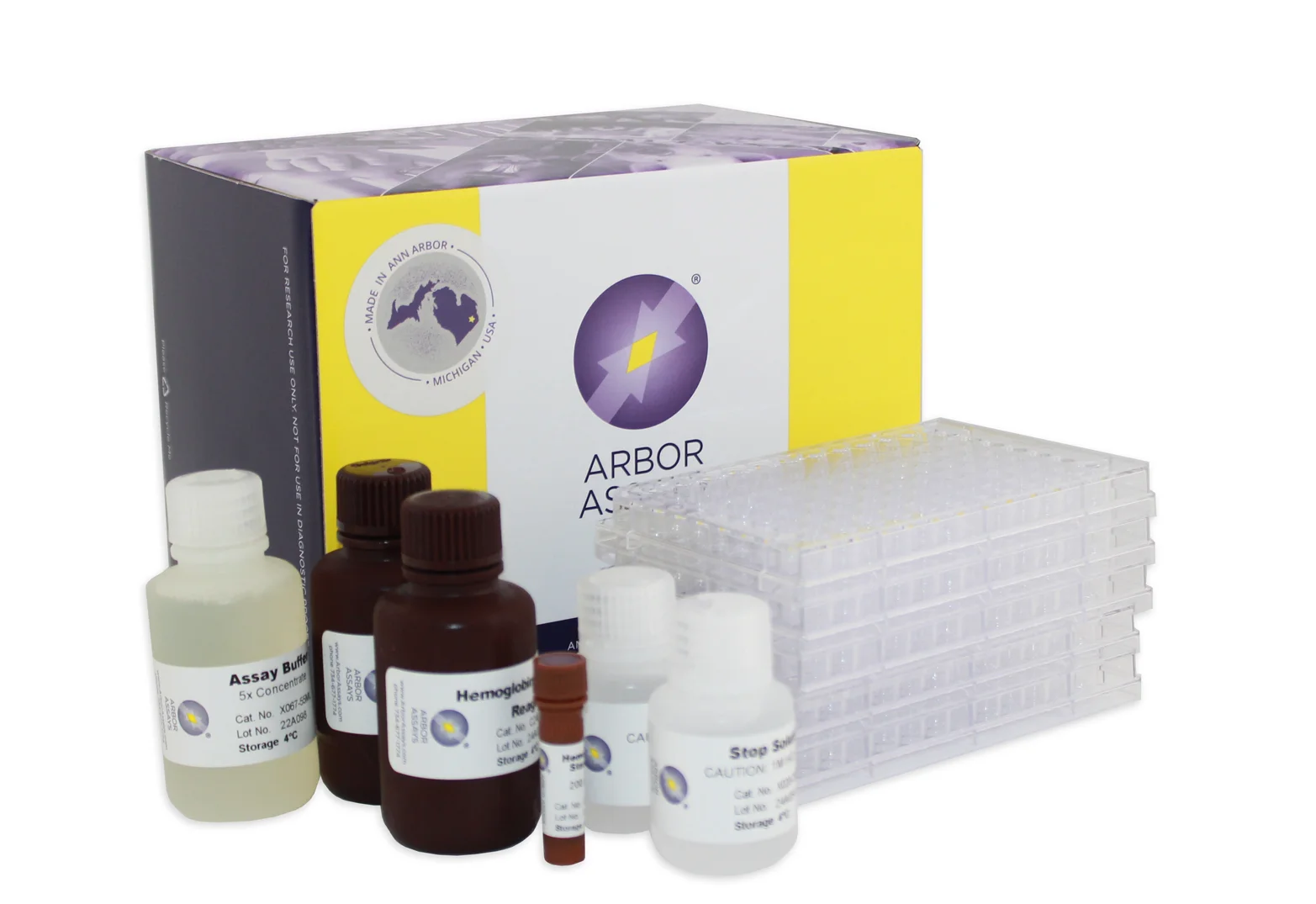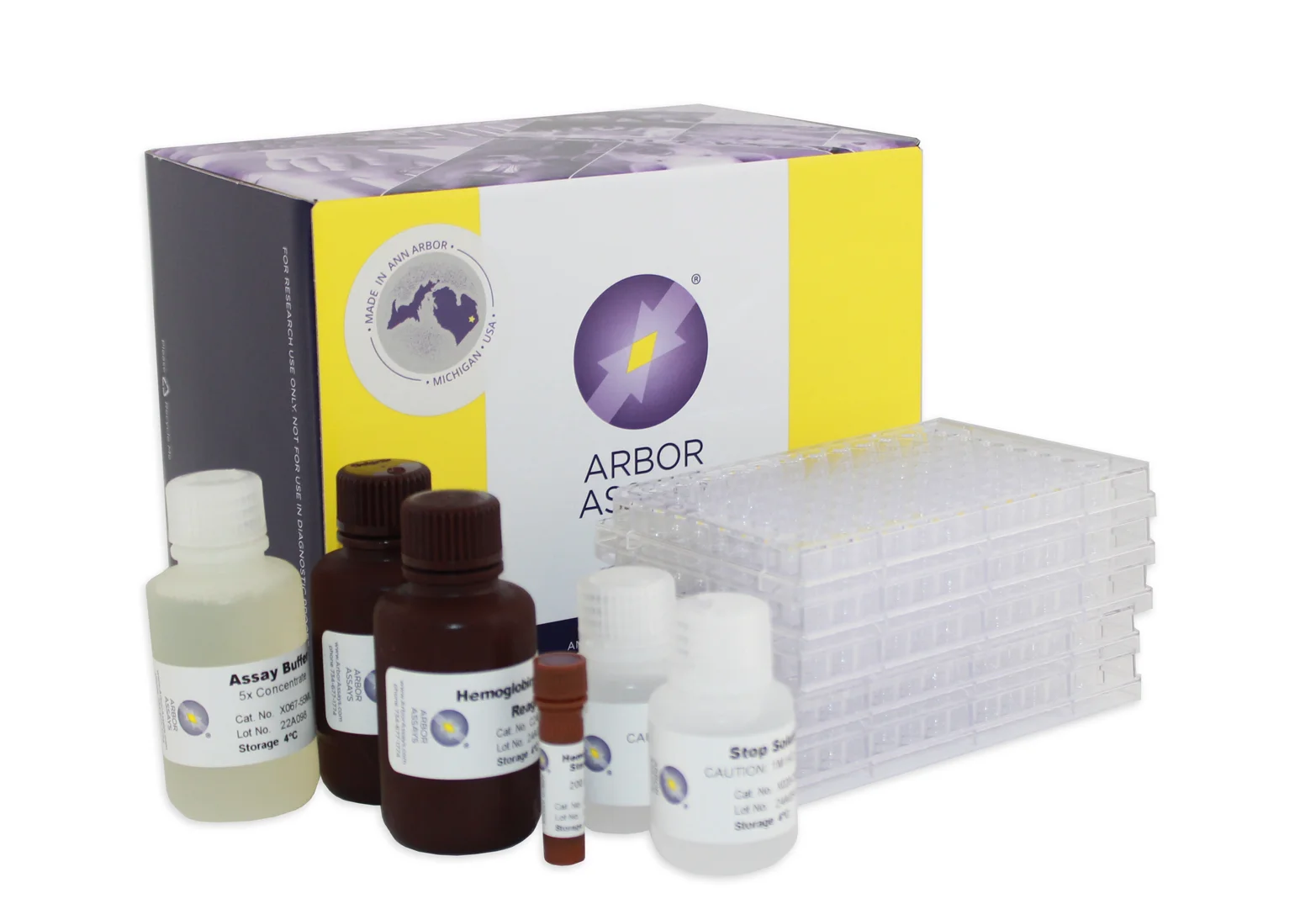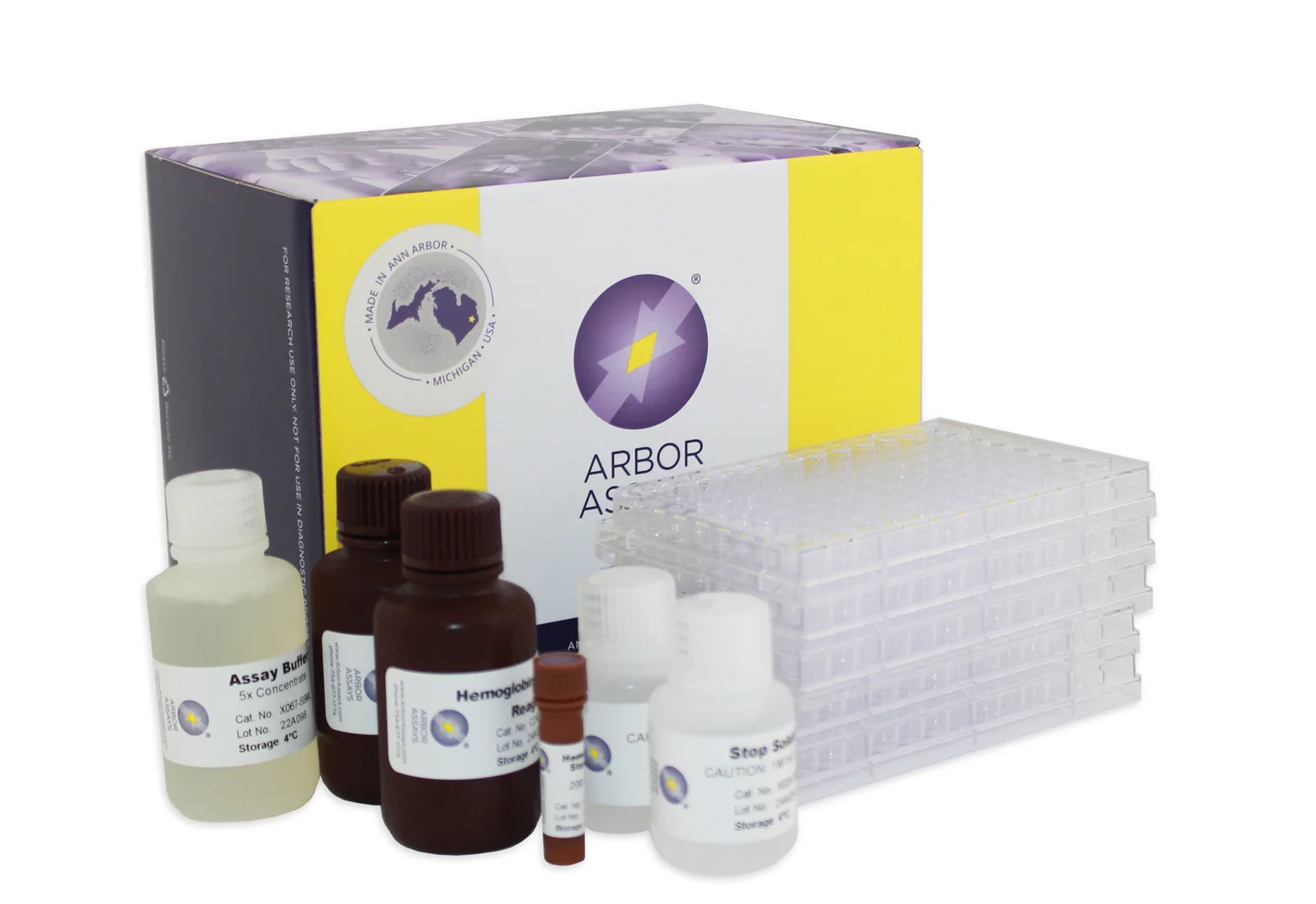Arbor Assays ELISA Kits
Arbor Assays ELISA Kits
Manufacturer: Arbor Assays
Adenosine-3’,5’-cyclic monophosphate, or cyclic AMP (cAMP), C10H12N5 O6 P, is one of the most important second messengers and a key intracellular regulator. Discovered by Sutherland and Rall in 19571, it functions as a mediator of activity for a number of hormones, including epinephrine, glucagon, and ACTH2-4. Adenylate cyclase is activated by the hormones glucagon and adrenaline and by G protein. Liver adenylate cyclase responds more strongly to glucagon, and muscle adenylate cyclase responds more strongly to adrenaline. cAMP decomposition into AMP is catalyzed by the enzyme phosphodiesterase. In the Human Metabolome Database there are 166 metabolic enzymes listed that convert cAMP5.
Manufacturer: Arbor Assays
Adenosine-3’,5’-cyclic monophosphate, or cyclic AMP (cAMP), C10H12N5 O6 P, is one of the most important second messengers and a key intracellular regulator. Discovered by Sutherland and Rall in 19571, it functions as a mediator of activity for a number of hormones, including epinephrine, glucagon, and ACTH2-4. Adenylate cyclase is activated by the hormones glucagon and adrenaline and by G protein.
Manufacturer: Arbor Assays
Cortisone (C21H28O5, Kendall’s Compound ‘E’) was identified by Mason, Myers and Kendall in 1936 as Compound E extracted from bovine suprarenal gland tissue that had the qualitative but not quantitative activity of cortin. The presence of multiple cortin-like compounds led the authors to speculate that the study of Compound E would reveal the nature of cortin1.
Manufacturer: Arbor Assays
Cortisone (C21H28O5, Kendall’s Compound ‘E’) was identified by Mason, Myers and Kendall in 1936 as Compound E extracted from bovine suprarenal gland tissue that had the qualitative but not quantitative activity of cortin. The presence of multiple cortin-like compounds led the authors to speculate that the study of Compound E would reveal the nature of cortin1. Compound E is now called cortisone and the more active Compound F, cortisol, and the concentrations of these two glucocorticoids vary due to the activity of two 11β-hydroxysteroid dehydrogenases (11β-HSD) 2,3.
Manufacturer: Arbor Assays
Cortisol, C21H30O5, (hydrocortisone, compound F) is the primary glucocorticoid produced and secreted by the adrenal cortex. It is often referred to as the “stress hormone” as it is involved in the response to stress and it affects blood pressure, blood sugar levels, and other actions of stress adaptation. Immunologically, cortisol functions as an important anti-inflammatory and plays a role in hypersensitivity, immunosuppression, and disease resistance1. In the metabolic aspect, cortisol promotes gluconeogenesis, liver glycogen deposition, and the reduction of glucose utilization2. Production of cortisol follows an ACTH-dependent circadian rhythm, with a peak level in the morning and decreasing levels throughout the day. Most serum cortisol, all but about 4%, is bound to proteins including corticosteroid binding globulin and serum albumin1,3. Only free cortisol is available to most receptors and it is through these receptors that physiological processes are modulated. Abnormal cortisol levels are being evaluated for correlation with a variety of different conditions, such as prostate cancer4, depression5, and schizophrenia6. It is already known that abnormal levels of cortisol are involved in Cushing’s Syndrome and Addision’s disease7.
Manufacturer: Arbor Assays
Corticosterone (C21H30O4, Kendall’s Compound ‘B’) is a glucocorticoid secreted by the cortex of the adrenal gland. Corticosterone is produced in response to stimulation of the adrenal cortex by ACTH and is the precursor of aldosterone. Corticosterone is a major indicator of stress and is the major stress steroid produced in non-human mammals. Studies involving corticosterone and levels of stress include impairment of long term memory retrieval1, chronic corticosterone elevation due to dietary restrictions2 and in response to burn injuries3. In addition to stress levels, corticosterone is believed to play a decisive role in sleep-wake patterns4,5.
Manufacturer: Arbor Assays
Corticosterone (C21H30O4, Kendall’s Compound ‘B’) is a glucocorticoid secreted by the cortex of the adrenal gland. Corticosterone is produced in response to stimulation of the adrenal cortex by ACTH and is the precursor of aldosterone. Corticosterone is a major indicator of stress and is the major stress steroid produced in non-human mammals. Studies involving corticosterone and levels of stress include impairment of long term memory retrieval1, chronic corticosterone elevation due to dietary restrictions2 and in response to burn injuries3. In addition to stress levels, corticosterone is believed to play a decisive role in sleep-wake patterns4,5.
Manufacturer: Arbor Assays
C-reactive protein (CRP) is a member of the pentraxin family of proteins, which also includes serum amyloid P component (SAP). Human CRP is comprised of five noncovalently associated subunits and forms a homopentameric structure1. It is a widely used biomarker for systemic inflammation and tissue injury2. CRP specifically binds to phosphocholine (PCh) residues of polysaccharides on many microbial pathogens and on apoptotic or necrotic cell membranes in a Ca2+-dependent manner.
Manufacturer: Arbor Assays
The principle form of the peptide is the proANP form which is 126 amino acids long. ANP is derived from amino acids 99-126 to form the 28 amino acid peptide with a disulfide bond between amino acids 7 and 23. ANP is the main member of a family of structurally and functionally related peptide hormones that exert many effects on cardiovascular and renal function. The combined actions of ANP on vasculature, kidneys, and adrenals serve acutely and chronically to reduce systemic blood pressure and intravascular volume4,5. ANP and the related brain natriuretic peptide bind to their common receptor, membrane-type guanylyl cyclase-A, which leads to biological actions through a cGMP-dependent pathway.









